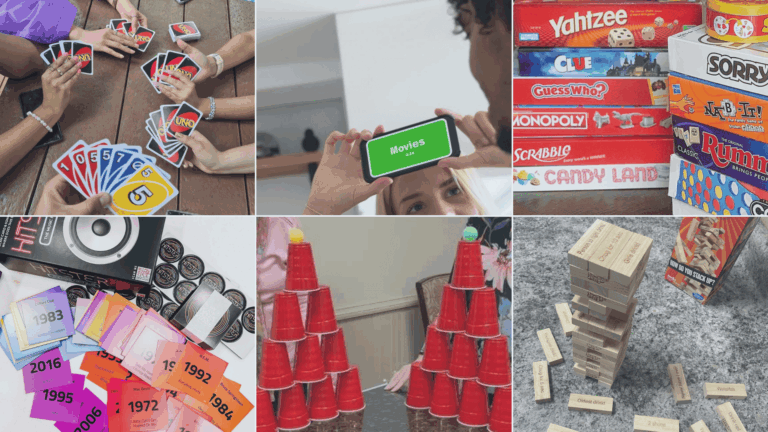Most people stress over proper pronunciation. They struggle with basic word patterns every day. Teachers often find that students repeatedly make the same mistakes.
Here’s something interesting: consonant-le syllables follow predictable stress rules in English. Words like “bubble,” “simple,” and “middle” share a hidden pattern.
This pattern affects how we pronounce thousands of common words.
Understanding this simple rule upgrades reading skills. It helps with spelling, too. Once someone knows the pattern, they can tackle new words with confidence.
What Are Consonant-le (CLE) Syllables?
Consonant-le syllables are word endings that contain a consonant followed by the letters “le.” These syllables appear at the end of words and create a specific sound pattern.
The “le” acts like a vowel sound, even though it contains no traditional vowels. Common examples include words like “table,” “apple,” “circle,” and “purple.” The consonant before “le” can be any letter except vowels.
These syllables are always unstressed. This means they receive less emphasis when we speak. The main stress falls on other syllables in the word.
Consonant-le syllables help us break down longer words. They make reading easier for students.
When someone recognizes this pattern, they can pronounce new words correctly. This skill builds reading confidence and improves spelling accuracy.
Can Consonant-le (CLE) Syllables Be Stressed or Unstressed Anywhere in a Word?

No, consonant-le syllables follow very strict rules. They can only appear at the end of words, never in the middle or beginning.
And they are always unstressed – this is one of the most consistent patterns in the English language.
Consonant-le syllables cannot occur anywhere within a word – they only appear in final position. These syllables are consistently unstressed, making them one of the most predictable patterns in English pronunciation.
Here’s what this means:
- Position: CLE syllables only come at word endings. You’ll find them in words like “table,” “simple,” and “purple” – but never in the middle of longer words.
- Stress: The CLE syllable is always the quiet, reduced part of the word. In “table,” we say “TA-ble” with stress on the first part. In the example, we say “ex-AM-ple” with the CLE still unstressed at the end.
This pattern is so reliable that educators use it as a fundamental teaching rule – CLE syllables act as “stable final syllables” that always sound the same way.
Stress Patterns and Placement in Consonant-le Syllables
Consonant-le syllables follow predictable stress patterns that depend on word length and structure. Understanding these patterns helps with both pronunciation and reading fluency.
Two-syllable words
Two-syllable words almost always stress the first syllable. Words like “table” (TA-ble), “apple” (AP-ple), “little” (LIT-tle), and “purple” (PUR-ple) follow this pattern.
The CLE ending stays unstressed with a soft schwa sound. This creates a strong-weak rhythm that sounds natural in English.
Three-syllable words
Three-syllable words show more variety but still keep the CLE unstressed. Some stress the first syllable, as in “animal” (AN-i-mal), “capital” (CAP-i-tal), and “terrible” (TER-ri-ble).
Others stress the second syllable, as in “example” (ex-AM-ple), “enable” (en-A-ble), and “ensemble” (en-SEM-ble). The CLE ending remains quiet in both cases, maintaining its reduced vowel sound.
Longer words
Longer words place stress based on their word parts and origins. Words like “incredible” (in-CRED-i-ble), “comfortable” (COMF-ter-a-ble), “reasonable” (REA-son-a-ble), and “vegetable” (VEG-e-ta-ble) may stress different syllables.
But the CLE syllable always stays unstressed. These words often have complex stress patterns due to their Latin or Greek roots.
The key rule
No matter where the main stress falls in a word, the consonant-le syllable is never stressed. It always produces the same quiet, reduced sound.
This consistency makes CLE syllables one of the most reliable patterns in English pronunciation. Teachers can confidently teach this as an absolute rule with no exceptions.
Note:This predictable behavior helps readers know how to say new words. When they see a CLE ending, they can count on it being the unstressed part of the word.
Are There any Exceptions to CLE Stress Rules?
CLE syllables are remarkably consistent in their pronunciation in English. Unlike many English rules, the unstressed pattern of consonant-le syllables has no true exceptions.
| Type | Examples | Why |
|---|---|---|
| No True Exceptions | All CLE words | CLE syllables are always unstressed – 100% consistent |
| Emphasis in Speech | “I said PURPLE!” | Sentence emphasis ≠ word stress |
| Silent Letters | castle, muscle, whistle | Silent consonants don’t change stress |
| Word Changes | table → tabulation | CLE structure disappears with suffixes |
| Spelling Variants | medal/meddle, petal/peddle | Same pronunciation, same stress |
| Dialects | bottle, metal, little | Regional accents don’t affect CLE stress |
| Compound Words | tabletop, applesauce | CLE stays unstressed in compounds |
Teaching Tips for Consonant-le Syllables

Teaching CLE syllables effectively requires structured, multisensory approaches that highlight their consistent patterns.
These proven strategies help students master both recognition and pronunciation of consonant-le endings.
- Use the “Count Back Three” Rule: Teach students to count back three letters from the end (consonant + le) and divide the word before that consonant.
- Emphasize the Silent E: Help students understand that the “e” in CLE syllables is always silent but necessary as a vowel marker. Every syllable needs a vowel, and “e” fulfills this requirement.
- Practice the Schwa Sound: Focus on the quiet, reduced “/ə/” sound that CLE syllables make. Compare stressed syllables (loud and clear) with unstressed CLE endings (soft and reduced).
- Color-Code CLE Endings: Use visual aids, such as highlighting or colored markers, to make CLE patterns stand out. This helps students recognize the pattern quickly in new words.
- Teach Spelling Patterns: Show students when to double consonants (apple, battle) versus single consonants (table, bugle) based on the preceding syllable type. This prevents common spelling errors.
Pronunciation Improvement Strategies
Effective pronunciation of consonant-le syllables centers on mastering stress patterns and the reduced schwa sound. These strategies help learners achieve natural English rhythm.
Master the Stress-Unstressed Pattern Practice exaggerated stress differences between syllables. Say “TA-ble” with a strong first syllable and very quiet ending.
Use hand clapping or finger tapping to mark stressed syllables while keeping CLE endings soft. This builds awareness of English stress-timed rhythm.
Key Practice Points:
- Focus on the schwa sound (/ə/) – CLE syllables should sound like “uh,” not clear vowels
- Practice in sentences: “The purple table” to maintain natural flow
- Start with simple two-syllable words, then progress to longer words
The goal is to make CLE syllables sound naturally reduced and unstressed, which creates the smooth rhythm that characterizes fluent English speech.
The Bottom Line
Consonant-le syllables represent one of English’s most reliable pronunciation rules. They always appear at word endings and remain consistently unstressed – no exceptions.
This predictability makes CLE syllables perfect for systematic teaching. The “count back three” rule consistently works, while the unstressed schwa sound helps create natural English rhythm.
For learners struggling with English pronunciation, mastering CLE patterns provides immediate improvement.
These syllables appear in thousands of common words, making this knowledge highly practical.
Start practicing with simple words like “table” and “simple” – the consistent rules will guide you through more complex vocabulary.


















